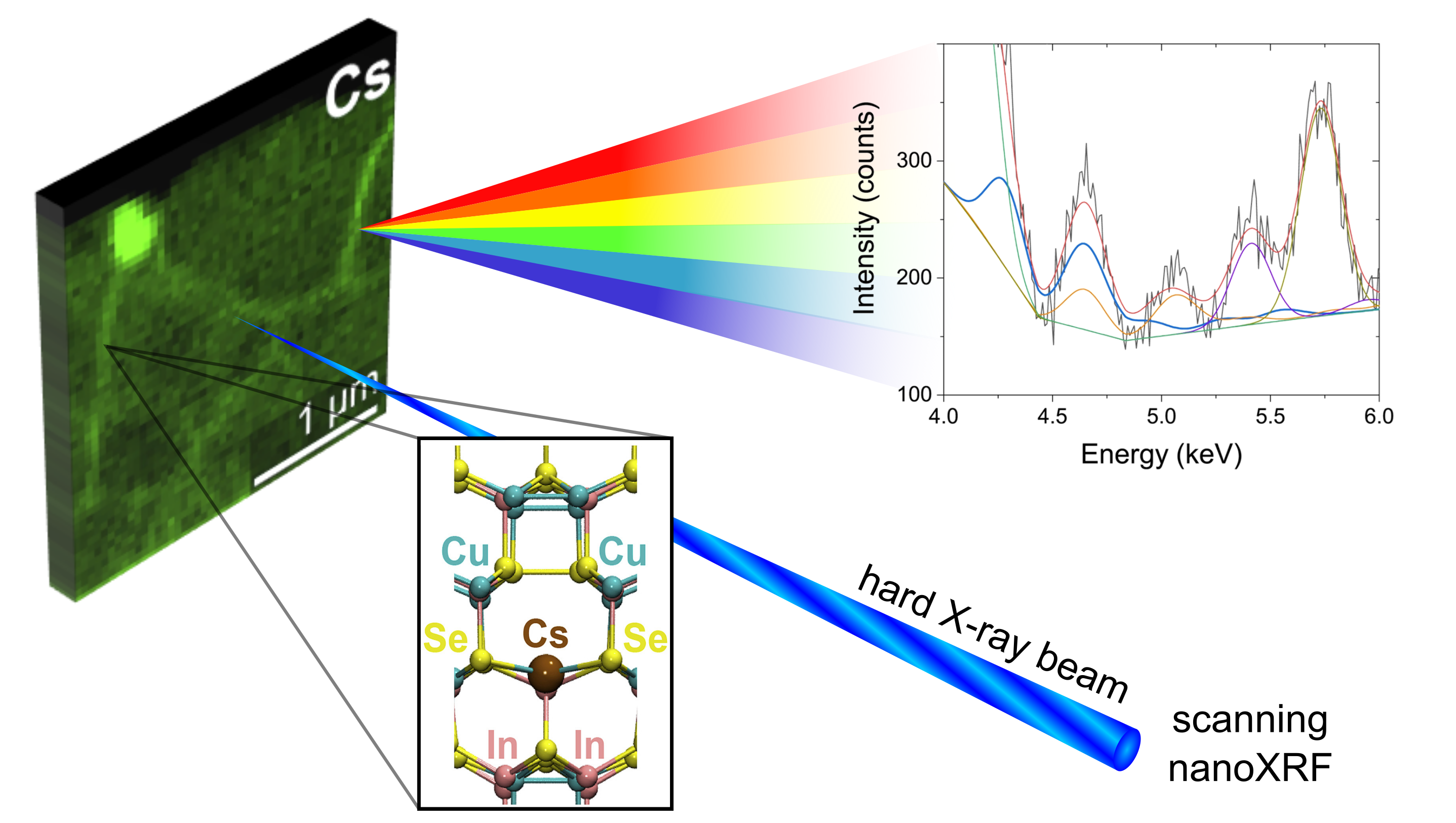- Home
- News
- General News
- The key to the efficiency...
The key to the efficiency of new solar cells
25-02-2020
Two publications show how the ESRF has helped scientists to explain record efficiency of solar cells using the Nano beamline ID16B.
Share
In recent years, the demand for highly efficient, non-toxic, and low-cost solar cells has led scientists to focus on new material systems and develop different methods to increase their efficiency. One promising material that fulfills these criteria is the so-called CIGS (Cu(In,Ga)Se2), featuring excellent intrinsic properties. Using the trial-and-error methodology, researchers have achieved record efficiencies by applying an alkali-fluoride post-deposition treatment (PDT) to the absorber material using heavy alkali elements, such as cesium.
With a conversion efficiency of over 23%, CIGS is not far off from the commercially used single crystalline silicon solar cells, which have an efficiency of just under 27% and has already overcome multi crystalline silicon with around 22%. “The numbers are pretty impressive, so we wanted to find out the origin of this improvement, especially how cesium is distributed in the absorber on the nanoscale. A beamline like ID16B provides the ideal requirements by exploiting a nanobeam”, explains Carsten Ronning, professor at the University of Jena and corresponding author of the paper.
At ESRF, the team located cesium at the grain boundaries and interfaces of the CIGS absorber when cesium is added via the PDT during the solar cell synthesis. To achieve this, they used nano X-ray fluorescence with very high sensitivity and spatial resolution on ID16B. What the scientists found could be analogized to a drive in a bumpy or a smooth road: “Imagine you are driving with your car on a road and there are holes on the way. Those holes will stop you or at least slow you down and if they weren’t there you would be driving much more smoothly. They found that cesium covers the ‘holes’ in the cell, making it more effective”, explains Jaime Segura, scientist in charge of ID16B.
With these results, Ronning and his team went back to Jena and carried out complementary ab-initio calculations, which were in agreement with the results of the ESRF.
 |
|
Principle of nano-XRF and local atomic structure: (left) A cross-sectional CIGS lamella is gradually moved through the highly focused hard X-ray nano beam. A spectrum of the created fluorescence radiation is recorded for each pixel. (right) Nano-XRF spectra extracted at the grain boundary and the corresponding fit in the energy region between 4.0 and 6.0 keV. (bottom) Possible local atomic structure at a grain boundary where Cs is present. Credits: Maurizio Ritzer. |
In parallel to this research, Ronning and his collaborators studied up-and-coming materials, called kesterite materials, here CZTSe (Cu2ZnSnSe4), which has drawn increasing attention for thin film solar cell applications, as their constituent are earth abundant and non-toxic. The conversion efficiency is still limited and reaches a record efficiency of only 12.6%. However, recently, researchers have shown that adding even small amounts of germanium drastically enhances the open circuit voltage, which is the main limitation of CZTSe.
Wanting to know more, the team used X-ray fluorescence spectroscopy and X-ray absorption near-edge structure spectroscopy (XANES) at ID16B on cross-sectional thin layers taken from high efficiency devices. “With fluorescence we located the germanium inside the absorber and with XANES we could determine the short-range structural order in each specific spot”, explains Maurizio Ritzer, Ph.D. student at the University of Jena and corresponding author of the paper. They saw that germanium remains in the CZTSe absorber layer after the synthesis process with a specific heterogeneous distribution correlated with the presence of different grains, and selected grain boundaries, but also the formation of nanoscale secondary phases.
“With our results, we can think ahead on ways to improve the synthesis processes of this kind of thin film solar cells enabling a commercial usability, especially by optimizing the use of alkali metals, or germanium, for large scale applications”, concludes Ritzer.
Reference:
Schöppe P., et al, Nano Energy, in press, journal pre-proof, 17 February 2020. https://doi.org/10.1016/j.nanoen.2020.104622
Ritzer, M. et al, ACS Appl. Energy Mater. 2020, 3, 1, 558-564. https://doi.org/10.1021/acsaem.9b01784
Text by Montserrat Capellas Espuny.



